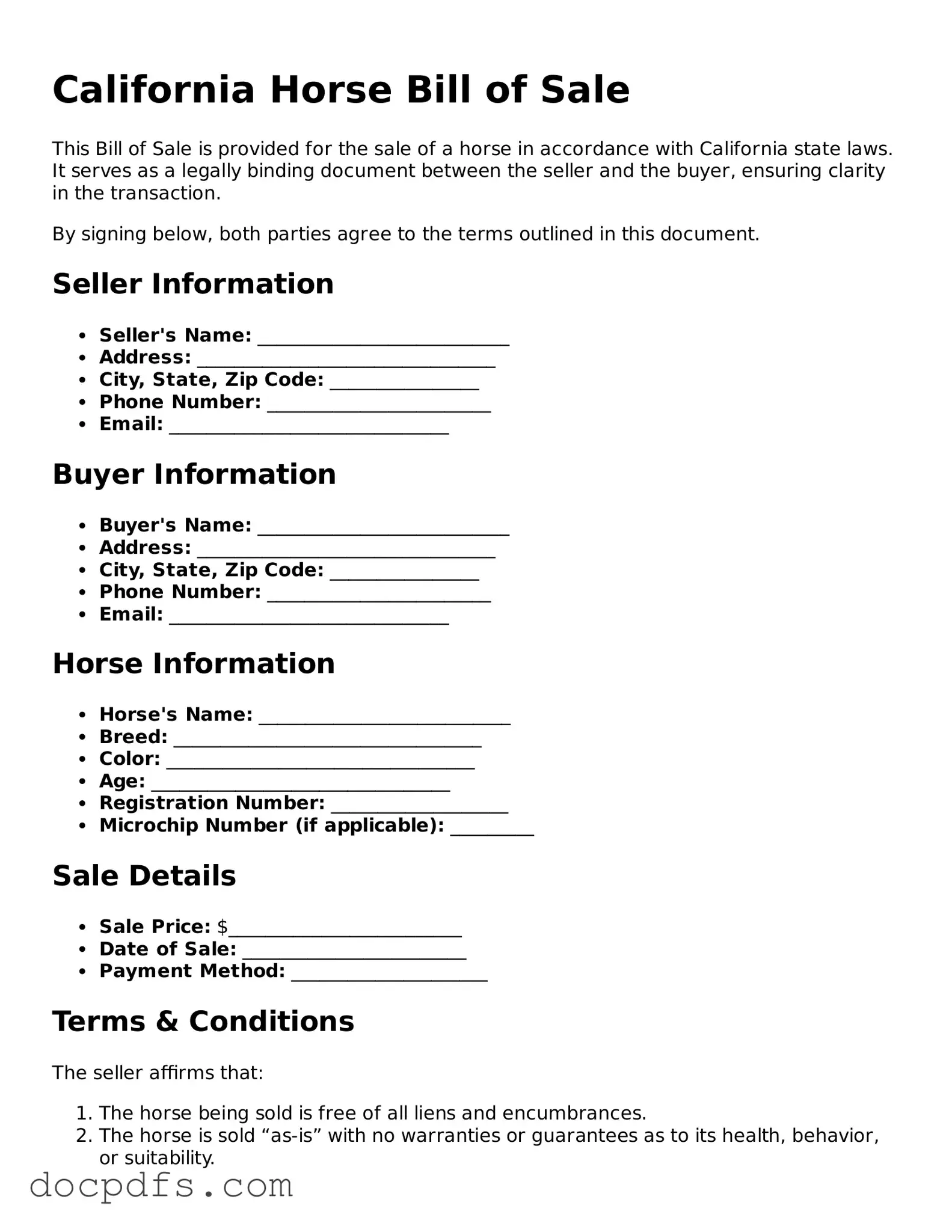What is a California Horse Bill of Sale?
A California Horse Bill of Sale is a legal document that outlines the transfer of ownership of a horse from one party to another. This form serves as proof of the sale and includes important details about the horse, the buyer, and the seller.
Why is a Horse Bill of Sale important?
This document is crucial for several reasons:
-
It provides legal protection for both the buyer and seller.
-
It serves as a record of the transaction, which can be helpful for future reference.
-
It can assist in proving ownership in case of disputes.
A standard California Horse Bill of Sale will generally include:
-
The names and addresses of the buyer and seller.
-
A detailed description of the horse, including its breed, age, color, and any identifying marks.
-
The sale price and payment terms.
-
Any warranties or guarantees regarding the horse's health or condition.
-
The date of the sale.
While notarization is not required for a Horse Bill of Sale in California, it is highly recommended. Having the document notarized adds an extra layer of authenticity and can help prevent disputes about the transaction in the future.
Can I use a Horse Bill of Sale for other types of animals?
While the Horse Bill of Sale is specifically designed for horses, similar forms can be created for other types of livestock or pets. However, it’s important to ensure that the document is tailored to the specific animal being sold.
What if the horse has health issues?
If the horse has known health issues, it’s essential to disclose these in the Bill of Sale. Transparency protects both parties and can prevent potential legal issues later on. Buyers should also consider having the horse examined by a veterinarian before completing the sale.
Is a Horse Bill of Sale legally binding?
Yes, a properly completed and signed Horse Bill of Sale is a legally binding contract. Both parties are obligated to adhere to the terms outlined in the document. If either party fails to meet their obligations, the other party may have legal recourse.
You can find a California Horse Bill of Sale form through various sources, including online legal form websites, local equestrian associations, or by consulting with a legal professional. Many of these forms are available for free or at a minimal cost.
After completing the Horse Bill of Sale, both the buyer and seller should keep a copy for their records. It’s also wise to ensure that the horse is transferred to the new owner with any necessary registration papers or health records, if applicable.
